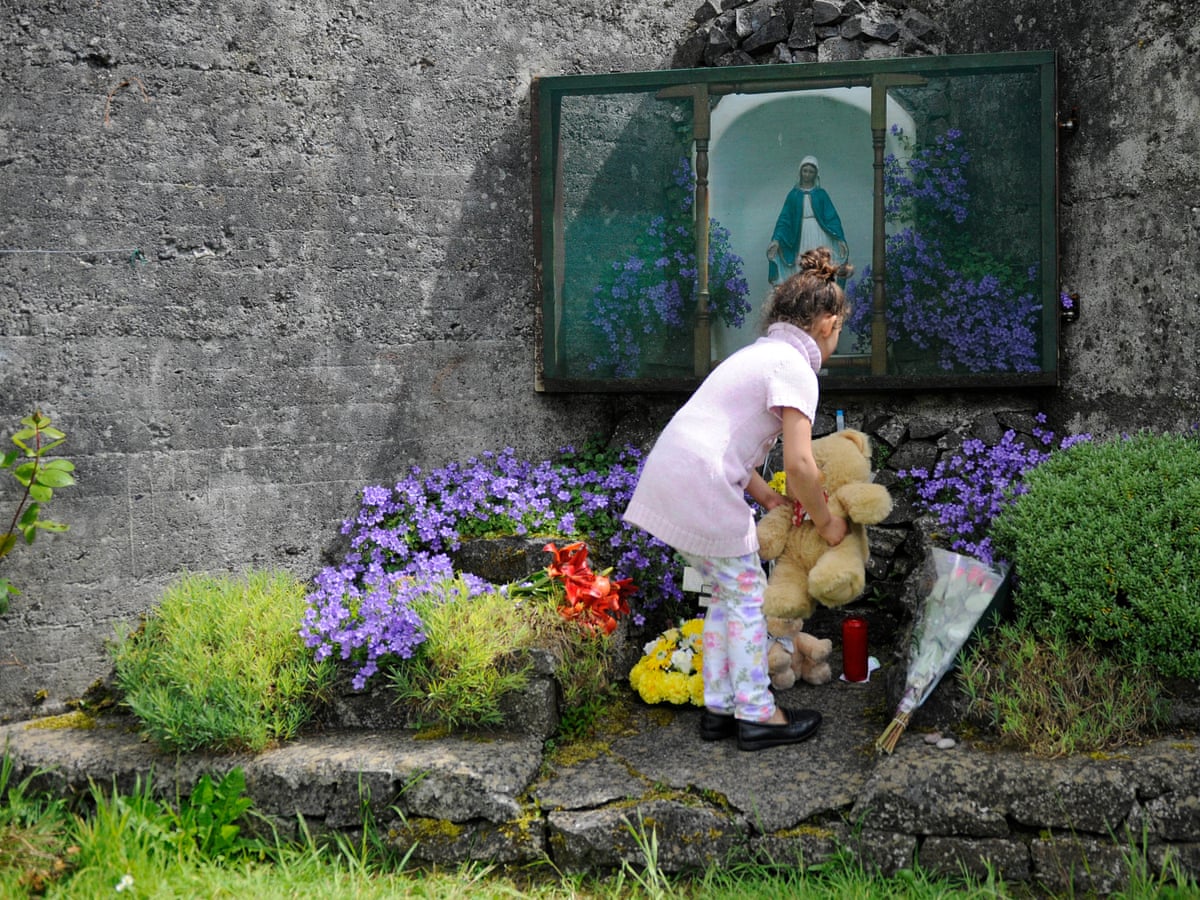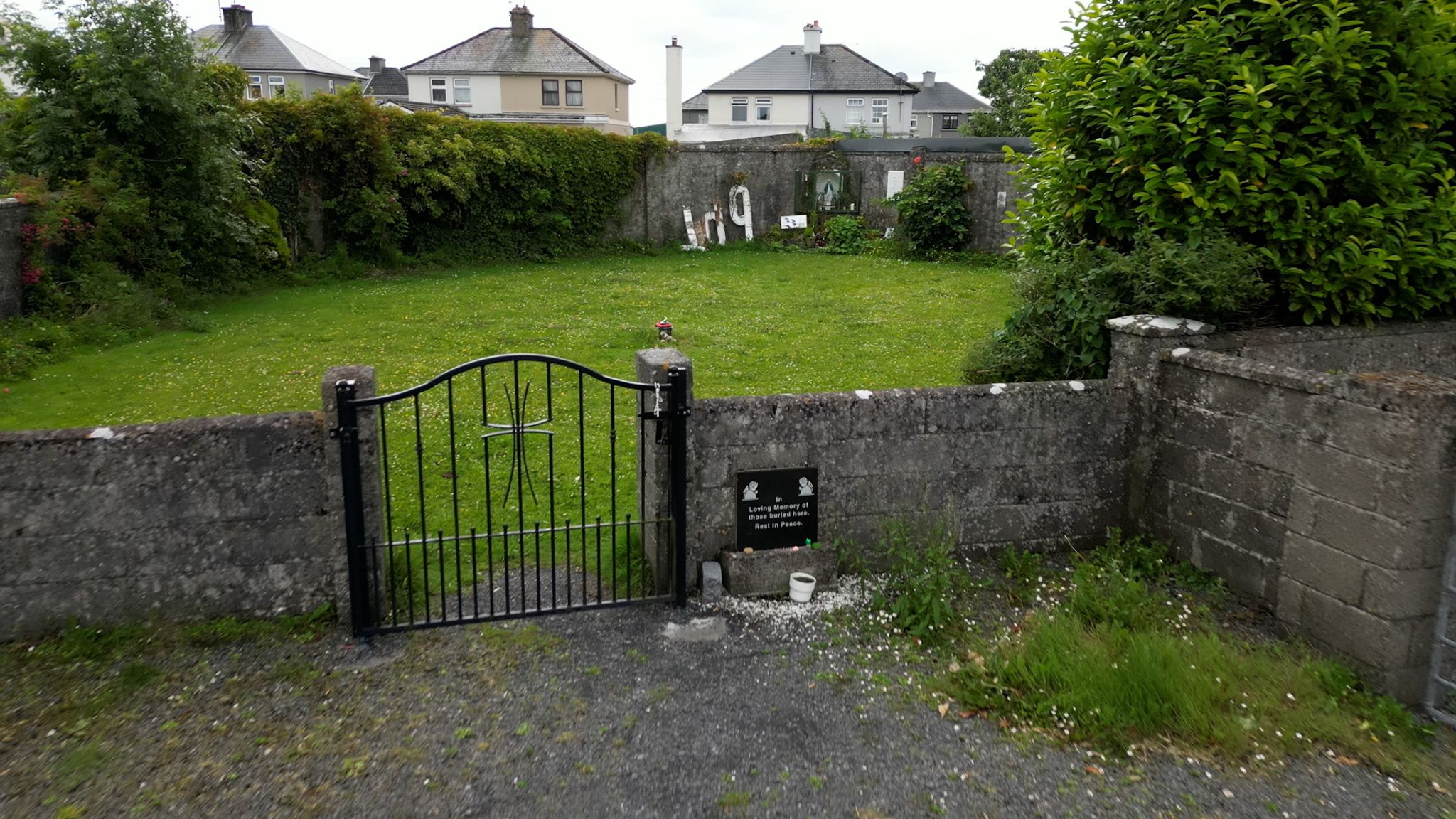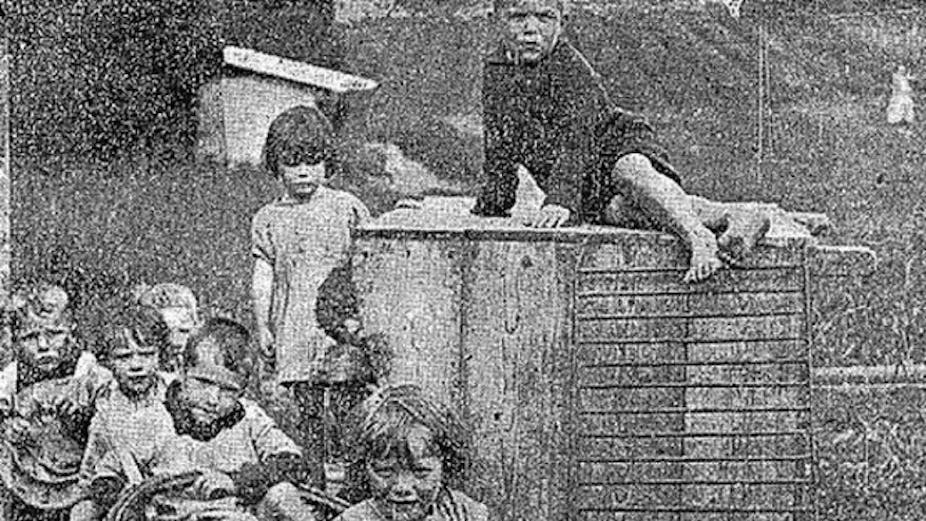In a disturbing and tragic revelation, Ireland has begun the process of exhuming the bodies of 796 children who were buried in a septic tank at a former mother and baby home in Tuam, County Galway.
The mass grave, believed to contain the remains of infants and young children who died in the 20th century, has raised questions about the treatment of unwed mothers and their children in Catholic-run institutions during that era.
This discovery is part of a larger effort to uncover the truth behind what happened to thousands of children who died in institutions run by the Catholic Church, often under appalling circumstances.
The forensic excavation began on Monday and is expected to take up to two years to complete. This marks the first mass excavation of its kind in Ireland, and it is hoped that the remains can be identified through forensic analysis, providing closure for the families who were never allowed to mourn their lost children.

The site in question was once home to the Bon Secours Sisters’ St. Mary’s Mother and Baby Home, which operated from 1925 to 1961. During that time, it served as a refuge for unmarried mothers and their babies, but it has since come to symbolize a much darker chapter in Ireland’s history.
The home was run by the Bon Secours Sisters, a Catholic religious order, and it was designed to house women who had fallen pregnant outside of marriage, a social stigma in early 20th-century Ireland. Many of the mothers who stayed there were poor and vulnerable, often left with little to no support from their families or communities.
However, for the children born in the home, their lives would be marked by neglect and institutional mistreatment. The majority of the children who died at the facility did so from malnutrition, neglect, or diseases that were left untreated due to the lack of proper medical care.
The discovery of the remains in the septic tank was the result of an investigation that began in the 2010s when local historians and researchers began to question what had happened to the children who had died at the home. After years of pressure, the Irish government agreed to launch a formal investigation into the site, leading to the forensic excavations now underway.

Forensic teams have been working tirelessly at the site, carefully uncovering the remains in the hope of identifying the children who were buried there. With the use of modern forensic techniques, it is possible that some of the children will be identified, allowing families to finally receive the answers they have been waiting decades for.
However, the emotional weight of the discovery is immense, as many of the children were never officially registered, and there are no records of their deaths. The excavation process has already uncovered heartbreaking scenes of numerous bodies crammed into a small, unmarked grave, a grim reminder of the appalling conditions under which these children were treated.
The remains of some of the infants are said to have been discovered in such a state that it is clear they were buried hastily and without dignity. The fact that these children were left to die in such conditions and were subsequently buried without ceremony or recognition speaks to the wider issue of how society, and particularly the Catholic Church, treated unmarried mothers and their children during this period.
The closure of St. Mary’s in 1961 was not the end of the story. The building itself was demolished, and the site was later repurposed for residential housing. Today, the location is surrounded by a community of homes, and the children’s burial site has been forgotten for decades, with only a small memorial marking the spot.

The excavation has brought the dark history of the site to light and sparked outrage from many who feel that the truth about what happened to these children should have been uncovered much sooner.
While the excavation of the septic tank is a significant step toward understanding the extent of the mistreatment of children in the care of Catholic-run institutions, it is only the tip of the iceberg.
Reports of similar discoveries at other sites across Ireland have surfaced in recent years, and the Irish government is under increasing pressure to investigate the fate of other children who died in state-run institutions during this period.
Many survivors of these homes, now elderly, have called for the government to take further action and ensure that those responsible for the mistreatment of children are held accountable.

The Irish government has apologized for its role in allowing these institutions to operate for so long, but for many, an apology is not enough. Survivors and families affected by the loss of their children demand more: full accountability, compensation, and recognition of the systemic abuse that took place under the auspices of religious and state institutions.
The discovery of the remains of 796 children at the St. Mary’s site is a stark reminder of the deep-seated issues of institutional abuse and neglect that have haunted Ireland for decades. While the forensic work being carried out may help provide closure for some families, the emotional and societal scars left by this dark chapter in Irish history will take much longer to heal.
The ongoing excavation and investigation into these sites will likely reveal even more disturbing truths about the treatment of women and children in Ireland’s Catholic-run institutions, prompting a wider conversation about the country’s past and its struggle to come to terms with the legacy of the Church’s influence over the years. As the excavation continues and more bodies are uncovered, the debate over how to reckon with the past intensifies.

For those who have been affected by this tragedy, the discovery of the remains is not just an academic exercise—it is a deeply personal journey to uncover the truth, honor the memory of those who died, and ensure that such mistreatment is never repeated. The haunting images of children buried in a septic tank, forgotten for so long, are a powerful symbol of the failures of society, the state, and the Catholic Church.




